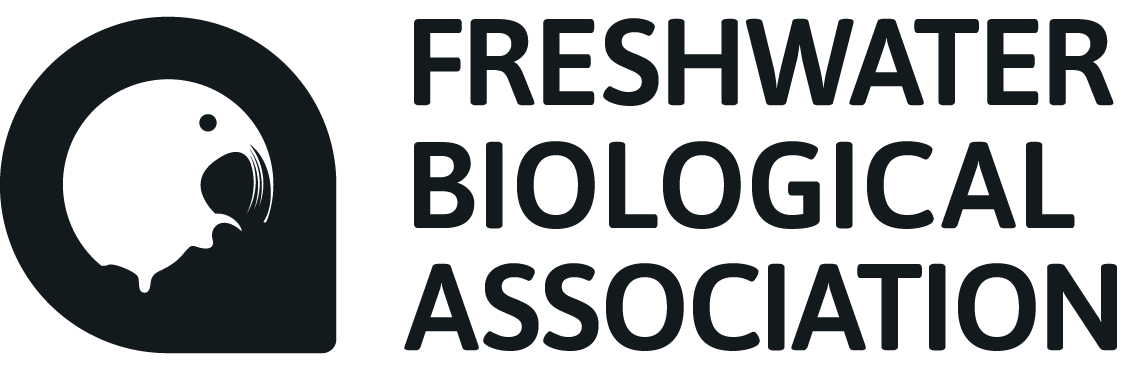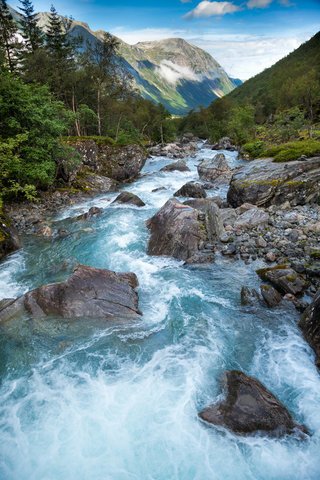The Climate+ Co-Centre: A new initiative to address water challenges on the Islands of Ireland and Great Britain
16 October, 2024
By Mary Kelly-Quinn (1), Michael Bowes (2), Phil Jordan (3), Colin Manning (4), Marcin Penk (1) & Fiachra O’Loughlin (5)
(1) School of Biology & Environmental Science, University College Dublin, Ireland; (2) UK Centre for Ecology & Hydrology, Wallingford, UK; (3) School of Geography & Environmental Sciences, Ulster University, Northern Ireland; (4) School of Engineering, Newcastle University, UK; (5) School of Civil Engineering, University College Dublin, Ireland.
Mary Kelly is a Professor of Applied Freshwater Ecology at University College Dublin and an FBA Fellow. In this article, Mary and colleagues introduce the ambitious new Climate+ Co-Centre and its research to improve freshwater environments in catchments across the islands of Ireland and Great Britain.
Edited by Rachel Stubbington, Nottingham Trent University
Rachel is both a Fellow of the Freshwater Biological Association and long-standing Editor of FBA articles. If you would like to submit an article for consideration for publication, please contact Rachel at: rachel.stubbington@ntu.ac.uk
Introduction
A new Co-Centre for Climate + Biodiversity + Water was launched in January 2024 for a six-year period, to undertake research providing evidence and urgently needed solutions for the interlinked climate change, biodiversity loss and water quality degradation crises on the islands of Ireland and Great Britain, and globally.
The primary funders are Science Foundation Ireland (SFI), Northern Ireland’s Department of Agriculture, Environment and Rural Affairs (DAERA) and UK Research and Innovation (UKRI). The Climate+ Co-Centre brings together >60 leading researchers from 14 academic partner institutions in Ireland, Northern Ireland and Great Britain in addition to >80 post-doctoral researchers and >25 PhD students.
The Climate+ Co-Centre has an integrated system of fundamental research ‘Platforms’, industry-linked, co-developed ‘Spokes’ (i.e. collections of targeted projects part-funded by industry), and cross-cutting activities (Fig. 1) designed to identify and analyse major threats to our environment, explore and test new solutions that address these threats, innovate, and provide policy guidelines to enable fair and sustainable transformations.
The cross-cutting activities include a Policy Response Unit, skills development for green transition, research synthesis working groups, and education and public engagement activities (Fig. 1).
The Platform themes and Spokes use a co-leadership model to ensure integration of climate, biodiversity, water and just-transition aspects (the latter seeking to ensure a fair, equitable transition to sustainable practices). Where possible, co-leadership is between funding jurisdictions, to enable meaningful integration across the Co-Centre locations.
Figure 1. Structure of the Climate+ Co-Centre research programme. CCA, cross-cutting activities; S1–S4, Spoke project themes; P1–P4, Platform project themes.
Research to address multiple pressures on fresh waters
Here we provide some examples to illustrate the breadth of water-related research projects, many of which are at an early planning stage. That breadth reflects the multifaceted nature of pressures on fresh water. These include changing precipitation patterns, in particular an increase in the frequency and intensity of extreme weather events (e.g. droughts, floods and storms), and water quality degradation due to pollutants including excess nutrients, fine sediments and biocides. Collectively, these pressures create a multi-stressor environment that challenges efforts to mitigate their impacts.
Extreme weather events add to existing pressures
Co-occurring weather extremes can have larger impacts together than when they occur in isolation. For example, the 2013/14 winter in Ireland and the UK saw frequent storms with high rainfall volumes and strong winds, leading to extensive flooding (Fig. 2) and damaging infrastructure and forestry operations. Researchers in Newcastle University will assess various aspects of these co-occurring wind–rainfall extremes on seasonal timescales, including how their joint likelihood varies across Europe, and what causes a wet and windy season such as the Irish and UK 2013/14 winter.
The project will use observational datasets that document past events and seasonal and decadal forecast datasets to evaluate our capacity to predict such extremes over varying timescales. These insights, together with monitoring undertaken in other projects, will inform planning of environmental protection and restoration measures.
Figure 2. An aerial view of flooding on the Somerset levels in 2014. Credit: Tim Pestridge.
Monitoring the effectiveness of water quality and biodiversity restoration measures
New monitoring approaches and systems are needed to identify water quality problems and inform restoration measures that improve ecosystem health, in line with Water Framework Directive targets. Measures including nature-based solutions are being trialed in rivers across Ireland and the UK, targeting diffuse agricultural pollution, reducing fine sediment inputs and removing instream barriers, to name a few. Monitoring of the effectiveness of these measures remains patchy, but is urgently needed to inform the design of appropriate restoration measures and to identify sites at which they should be deployed. Similarly, we need to assess the effectiveness of restoration projects in terms of improvements in biodiversity and ecosystem functioning, as well as to assess the time needed for recovery. Some planned projects are described below.
1. Nature-based solutions in monitoring projects
Several monitoring projects are planned at field sites across Northern Ireland by Ulster University researchers. The capacity of two nature-based solutions to improve water quality will be evaluated. First, dissolved organic carbon (DOC) reductions using ‘cell-bunding’ techniques, which create watertight ‘cells’ that enable peatlands to rewet, will be assessed on a forest-to-bog site (Fig. 3). This investigation represents an important new test of this technique and will inform recommendations for future projects. Second, the ability of short-rotation coppice willow to attenuate nutrients from irrigated wastewater effluent will be examined, in terms of both water quality in adjacent fresh waters and soil quality.
In a separate project, tributaries of Lough Neagh, Ireland’s largest lake, will be investigated using a range of low- and high-resolution sampling protocols to test assumptions in the apportionment of phosphorus (including pollution originating from point and diffuse sources) and phosphorus models for the lake. A final project will use new datasets to inform conceptual models that track DOC exports from the Glens of Antrim peatlands.
Figure 3. A cell bund established on a forest-to-bog restoration site in Co. Fermanagh.
Credit: Dr Kevin Atcheson, Ulster University.
2. Responses to barrier removal
Researchers at University College Dublin (UCD) will investigate how ecosystems respond to removal or modification of the artificial in-channel barriers (e.g. weirs and culverts) that currently fragment river networks, to inform actions that restore longitudinal conductivity and thus support processes including fish migration and sediment transport. The ambitious target of restoring at least 25,000 km of channel into free-flowing rivers under the new EU Nature Restoration Law means that there will be a marked increase in barrier removal across Europe in the next 5–10 years.
3. Scale matters in restoration
Other UCD researchers will liaise with LIFE (the EU’s funding instrument for the environment and climate action) and European Innovation Partnership projects to monitor the effectiveness of the mitigation measures they are using to reduce pollution inputs. Both ecological and hydromorphological responses will be monitored. A further goal is to assess the scale of restoration measures needed to yield measurable improvements in water quality and biodiversity. For example, UCD are establishing a new freshwater mesocosm system of 24 1-m³ artificial ponds to investigate ecological resilience, aquatic–terrestrial coupling and ecosystem functioning, which will complement observational field data.
Water quality in the River Thames catchment
The main focus of research led by the UK Centre for Ecology & Hydrology (UKCEH) will be detecting water quality improvements associated with the upgrade of a sewage treatment works (STW) in the River Chess, a chalk stream in the Thames catchment. UKCEH are also collaborating with partners at Anglian Water and Welsh Water to access decades of water quality, chlorophyll and flow data for the major rivers in their regions. These data will be used to track long-term temporal changes in river conditions and algal bloom risk, which may reflect human population change, STW upgrades and agricultural land-use changes. UKCEH researchers are also about to start working with the National Trust in the upper Thames catchment, to evaluate the impact of nature-based solutions (in-line ponds for sediment reduction and wetland creation; Fig. 4) in the River Cole.
Figure 4. Constructed in-line ponds for sediment reduction. Credit: Dr Mike Bowes, UKCEH.
Concluding remarks
Fresh water will also be considered in many of the Climate+ Co-Centre’s other Spoke and Platform projects. For example, the Enabling Fair Transitions project will involve people across the island of Ireland in research to explore how different communities understand and deal with issues including climate change, biodiversity loss, land use and water supply.
As projects develop, updates will be provided on Climate+ Co-Centre social media channels, available via linktr.ee/climatecocentre, and the upcoming website, which will be available at www.climatecocentre.org.
Further reading
The Freshwater Biological Association publishes a wide range of books and offers a number of courses throughout the year. Check out our shop here.
Get involved
Our scientific research builds a community of action, bringing people and organisations together to deliver the urgent action needed to protect freshwaters. Join us in protecting freshwater environments now and for the future.















